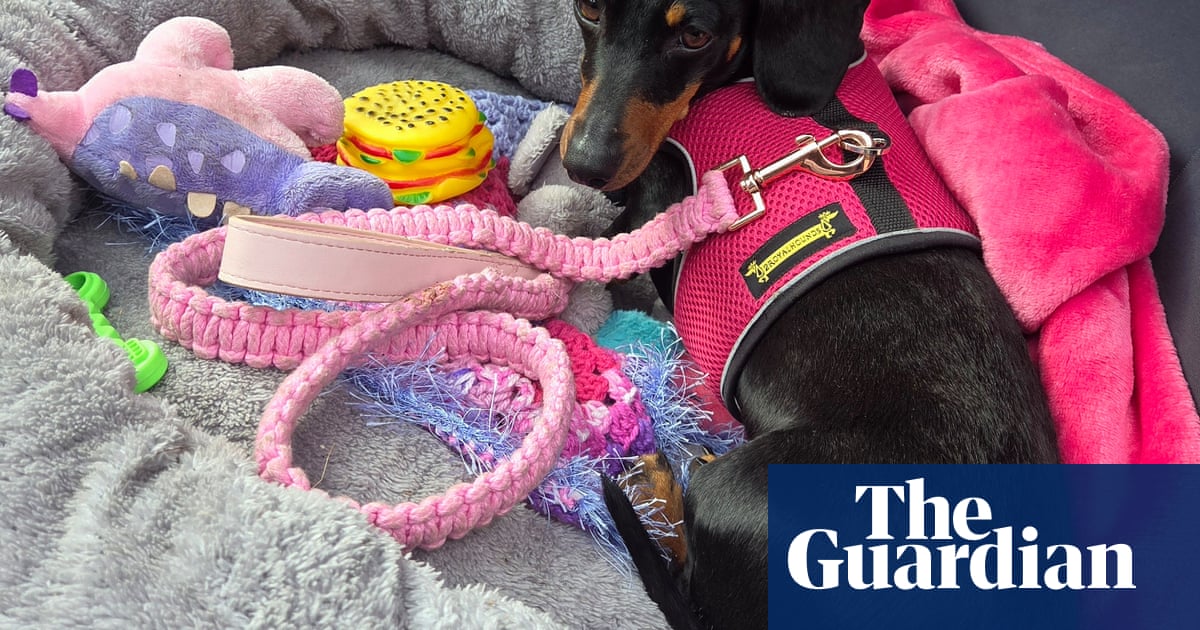As Valerie is reunited with her owners, mystery remains over how the miniature dachshund braved more than 500 days in Kangaroo Island’s rugged wilderness only to emerge healthy, happy – and larger than before.
Valerie captured the world’s attention when she was spotted 529 days after going missing on the South Australian island, with people worldwide avidly following thestory of her capture.
But the former 4kg dog put on 1.8kg since going missing, raising questions about her time away.
Owners Georgia Gardner and Josh Fishlock, from Albury in New South Wales, took Valerie to the South Australian island for a holiday in November 2023, but the small dog escaped her pen at Stokes Bay and disappeared.
Sign up for Guardian Australia’s breaking news email
Local organisation KangalaWildlifeRescue, who spotted Valerie in March this year and trapped her weeks later, posted on social media on Tuesday night that a vet found she was in “perfect health”.
The island’s mayor said locals believe someone must have been feeding the small dog, while Kangala director Lisa Karran said they were “sure possums or cats out there were grooming her”.
Kangaroo Island hasdeclared war on the feral cats on the island, which kill the native wildlife including endangered species.
After multiple tantalising glimpses of the sausage dog in cameras set up by Kangala, theymanaged to trap her on 25 Aprilusing a cage with a remote trigger.
Videos posted since show a happy little dog frolicking with toys and cuddling up to Kangala staff – a far cry from the rabid canine some feared she may become.
However, many island locals and social media users have commented on the dog’s remarkably healthy appearance after her time in the wild, in a place populated by aggressive feral cats, snakes and other predators.
The Kangaroo Island mayor, Michael Pengilly, said the story was “fantastic publicity” for the island but that people suspected someone had been looking after Valerie in her free-range years on the land.
“Ninety percent of people that have spoken to me have said someone must have been feeding and watering her for her to survive,” he said.
“By the colour of the coat, how shiny it was and the condition of the dog there’s no way known it could have come through however many days without being fed and watered.”
Some said it was possible Valerie fed on roadkill or other animals’ faeces and drank from dams.
Kangala and the owners have been reluctant to engage with most media outlets and did not answer Guardian Australia’s questions. They said last week that broadcast media had violated their privacy by taking pictures of Valerie without permission.
Sign up toBreaking News Australia
Get the most important news as it breaks
after newsletter promotion
Gardner and Fishlock told Adelaide newspaper the Advertiser they were happy to see their “princess” after so long.
They said she had become “more open to people” and gave them kisses and cuddles.
Locals and experts had previouslyvoiced concernsthat a dog on its own for that long would become feral. They were also concerned about her impact on native wildlife on the island.
Pengilly said Valerie’s pattern of behaviour made him suspect she had someone looking out for her, something multiple locals on the island have told Guardian Australia they also believe.
“It was going back to where they had the trap set up every four, five, six days, which says to me it’s getting fed and looked after at home, then it smells something and goes back here,” Pengilly said.
On social media, some suggested it was a “money-making exercise”, with the global attention focused on the small charity, staffed only by volunteers.
“We all love the story but I’m just thinking they are milking it a bit now,” one said.
In response, Kangala said: “When the dust settles and the truth comes out I think you might be pleasantly surprised.
“It can be hard to see in this cruel world, but most people still want to do what’s right.”
Kangala has not responded to questions about how much they raised in their ongoing donation efforts.
Overseas donors have traditionally been generous to Kangaroo Island, Pengilly said.
“Withthe fires, they were exceedingly generous, we got $100,000 short of $6m, a lot of it from overseas,” he said. “They’re all falling head over heels for Valerie.”
Others wondered why it took so long for the owners to reunite with her.
Kangala said the owners needed to organise time off, and Valerie needed time to readjust and “decompress”.
“Putting her in a car, travelling many hours when she was first rescued, we don’t believe would have been in her best interest. She needs time to decompress and adjust,” the organisation said on Facebook.
Now, they said, “Valerie is in perfect health and ready for her parents and the next chapter of her life.”
